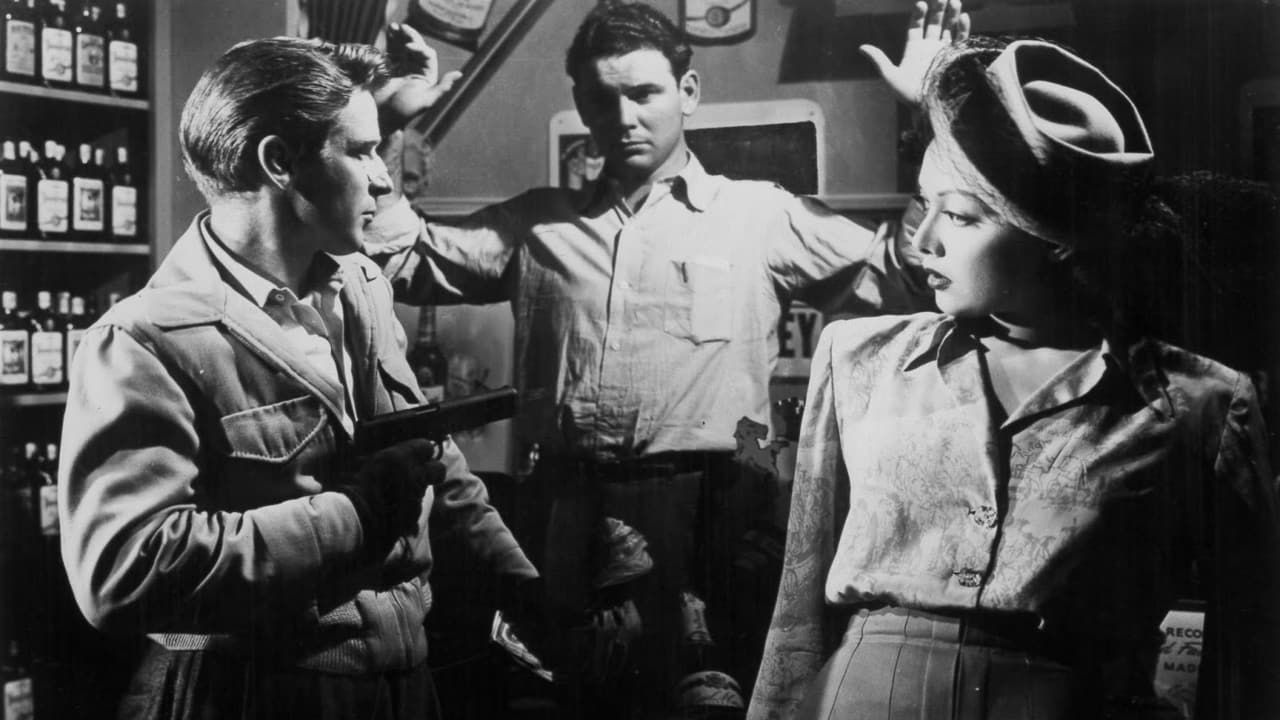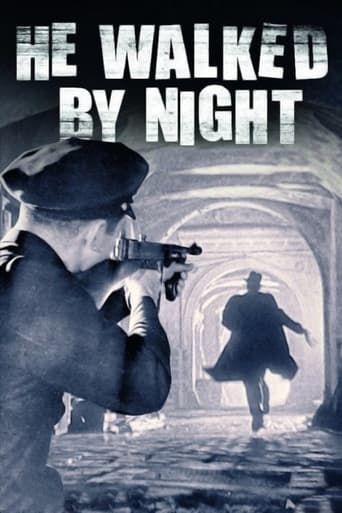



everything you have heard about this movie is true.
View MoreIt's not great by any means, but it's a pretty good movie that didn't leave me filled with regret for investing time in it.
View MoreWatch something else. There are very few redeeming qualities to this film.
View MoreThe story, direction, characters, and writing/dialogue is akin to taking a tranquilizer shot to the neck, but everything else was so well done.
View MoreAtmospheric and detailed in every way, shape and form, this is what tension is all about. Cop killings are a serious matter, and nearly 70 years later, this film still hits raw nerves. After the titles dedication to the world of law enforcement is followed by stock footage narration that takes you to downtown Los Angeles where calls come in one after another that the narrator describes as a city gone mad. Corrupt or not, the police force has a job to do, and when real criminals are taken off the streets of any big city, it is something to celebrate. There are moments of silence here that in some films indicates that nothing is going on, but here, something is always happening. Richard Basehart gives a truly creepy performance as a cop killer who kills the officer simply asking him where he is going in total cold blood. Witnesses surface who saw the fleeing Basehart are gathered together where little descriptions provide enough of a picture of who they are looking for. Los Angeles streets turn sinister as the killer leads the police force (among them Scott Brady and Jack Ebb) on a not so merry chase.If you like tight camera work that really goes into the structure of the new wave, then this is a great example of how film noir and crime dramas, whether on the big screen or the then new invention of television. It's a chase not only between cop and criminal, but camera and cast, turning precincts, streets, sewers and various other types of locations into characters. The end of the war gave filmmakers new tricks to try, and this one succeeded in abundance.
View MoreComplete with V.O. narrative, this Dragnet-style police procedural describes the pursuit of a killer, and is based on the real-life crime spree of Erwin Walker (played by Richard Basehart). The story is set in Los Angeles in the late 1940s.This is not a whodunit. We see the killer's face early in the film. The plot is more of a cat-and-mouse game between the cops and the criminal, with the criminal usually two steps ahead of the cops. Midway through, this cat-and-mouse game plays out nicely in night scenes with minimal dialogue. Roughly two-thirds of the plot involves police making efforts to find the guy; the other third involves the criminal in his activities and his attempts to evade capture. One thing that detracts from the story is that although this criminal was a killer, most of the crimes recounted in the plot involve robbery and burglary, and that renders the story less intense."He Walked By Night" is one of the first, if not the first, films to use composite drawings as a procedure to identify the perp. The film also has the distinction of being the production that led to the Jack Webb TV series "Dragnet" in the 1950s. Webb plays a small part in this film as a lab technician.Lots of shadows and stark B&W lighting yield interesting noir visuals. But the film stock is poor. Best visuals occur toward the end where the plot is set in a series of underground storm drains. The visual effects of flashlights, together with echoes in these cavernous tunnels, render some of the most evocative scenes in the film.Music is intermittent and nondescript. Acting is acceptable. The V.O. narrative is overbearing and annoying at times. It's obvious that the story is told, and the script is written, from the POV of the L.A. police department, not from Hollywood scriptwriters. As such, the overall tone is cold and clinical.A story that's based mostly on robberies and burglaries, and an annoying V.O. narrative, combine to make the film less intense and more dated than contemporary films. Yet "He Walked By Night" has some significant distinctions that make it important historically. And the script is interesting because the events really happened. It's worth at least one viewing, especially for viewers who like true-life crime stories.
View MoreRichard Basehart is chilling as a radio operator-turned rogue in this noir that is literally cloaked in shadows.Rather than be caught with lock-picking tools, Roy pumps a patrolman full of lead. The cop tries valiantly to fight back and a whole detail of gumshoes work the streets of LA to find this reptilian thief.The cops use a mild-mannered businessman as the bait to catch Roy, leaving him woefully vulnerable to injury or worse. Basehart is chilling in a couple of claustrophobic scenes with the sap.Basehart gets milk deliveries to feed his poor dog, and that turns out to be his undoing. The film ends jarringly abruptly, like the victim's life.Grim, harsh, and powerful.
View MoreFascinating film. It surely inspired the video game LA Noire.Many of the sights in the game are seen in this film, eg the library. There are several shots of Hollywood police station, well known to LAN gamers. The intrigue would fit well into LA's case book. I swear some of the louche fish the cops pick up in their dragnet also act in LAN! I'm sure you get to drive some of the cars too! The end is fabulous to watch, as the killer is surrounded and the noose is pulled tight. He has no chance, the manpower deployed is overwhelming. And that's reassuring, because he's the scariest type of all, a total socio-path who will kill anyone at all.Great acting all round, with beautiful noire photography. A great shot shows you exactly why they call them "slugs". Do watch the beautiful copy at the Internet Archive. It's crisp and clear and does justice to this absorbing film.
View More